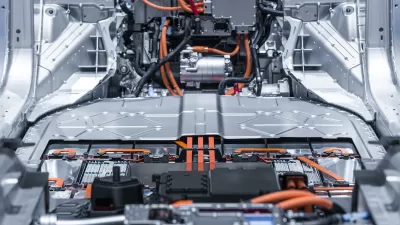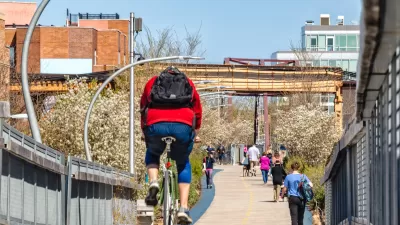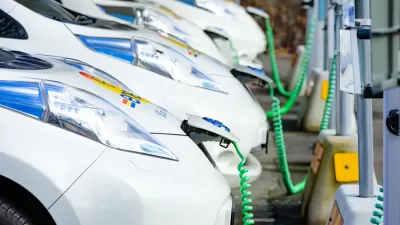New research suggests that the electrification of automobiles can undermine planning efforts to create denser development patterns and may work against policies that encourage non-motorized forms of mobility, such as biking and walking.
In the 60's, urban planners and politicians in Reykjavik consciously turned their back on Europe and sought to emulate the most advanced urban development planning in the world in the United States. The results would make any teacher proud: one of the highest per capita car ownership rates in the world, sprawling low-density urban development and a citizenry that is nearly allergic to public transportation.
Fast forward to the early 21st Century as new ways of thinking about mobility and transportation infrastructure begin to take hold in the midst of the worst economic collapse in Iceland's history. As Dagur B. Eggertsson, the former mayor of Reykjavik , noted "we [Icelanders] are really at a crossroads now in my opinion . . . are we going to stick to the 1960's plan or are we going to make some radical changes?".
One of the more contentious questions within planning today is the role of the automobile within a sustainable mobility paradigm. The recent emergence of strong policy and planning support for the introduction of electric vehicles raises thorny questions as to whether or not this development will be complementary to, or conflicting with, other sustainable mobility planning goals, such as the pursuit of compact cities, restrictions on automobiles, promotion of walking and bicycling, and support for public transport.
Researchers from Aalborg University in Denmark and Reykjavik University in Iceland have carried out a pilot study in the Reykjavik city region concluding a strategy of provision for electric vehicles on a large scale represents a continuation of the dominant "predict-and-provide" transport engineering approach, drawing scarce financial and institutional resources away from path-breaking measures such as the efforts to create denser development patterns and promote non-motorized and public forms of transport.
Thanks to Patrick Driscoll
FULL STORY: Is the Future of Mobility Electric? Learning from Contested Storylines of Sustainable Mobility in Iceland

Trump Administration Could Effectively End Housing Voucher Program
Federal officials are eyeing major cuts to the Section 8 program that helps millions of low-income households pay rent.

Planetizen Federal Action Tracker
A weekly monitor of how Trump’s orders and actions are impacting planners and planning in America.

Ken Jennings Launches Transit Web Series
The Jeopardy champ wants you to ride public transit.

Rebuilding Smarter: How LA County Is Guiding Fire-Ravaged Communities Toward Resilience
Los Angeles County is leading a coordinated effort to help fire-impacted communities rebuild with resilience by providing recovery resources, promoting fire-wise design, and aligning reconstruction with broader sustainability and climate goals.

When Borders Blur: Regional Collaboration in Action
As regional challenges outgrow city boundaries, “When Borders Blur” explores how cross-jurisdictional collaboration can drive smarter, more resilient urban planning, sharing real-world lessons from thriving partnerships across North America.

Philadelphia Is Expanding its Network of Roundabouts
Roundabouts are widely shown to decrease traffic speed, reduce congestion, and improve efficiency.
Urban Design for Planners 1: Software Tools
This six-course series explores essential urban design concepts using open source software and equips planners with the tools they need to participate fully in the urban design process.
Planning for Universal Design
Learn the tools for implementing Universal Design in planning regulations.
Ada County Highway District
Clanton & Associates, Inc.
Jessamine County Fiscal Court
Institute for Housing and Urban Development Studies (IHS)
City of Grandview
Harvard GSD Executive Education
Toledo-Lucas County Plan Commissions
Salt Lake City
NYU Wagner Graduate School of Public Service





























